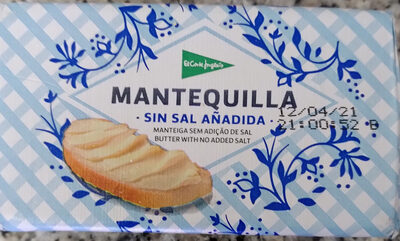Mantequilla sin sal - El Corte Inglés - 250 g.
Codi de barres ambigu: aquest producte té un codi de barres amb número de circulació restringit per a productes d'una empresa. Això significa que diferents productors i botigues poden utilitzar el mateix codi de barres per a diferents productes.
×
Aquesta pàgina del producte no està completa. Podeu ajudar a completar-la editant-la i afegint-hi més dades a partir de les fotos ja disponibles, o fent-ne més amb l'aplicació de androide o iPhone / iPad. Gràcies!
×
Codi de barres: 21407888
Quantitat: 250 g.
Empaquetament: pt:papel aluminio
Marques: El Corte Inglés
Categories: Productes làctics, Greixos, Productes per untar, Greixos d'untar, Greixos animals, Greix lacti, en:Dairy spread, Mantegues, en:Pasteurized butters
Llocs de fabricació o processament: España
Botigues: El Corte Inglés
Països on es va vendre: Espanya
Matching with your preferences
Entorn
Petjada de carboni
Empaquetament
Transport
Report a problem
Fonts de dades
Producte afegit per nustiante
Última modificació de la pàgina del producte per teolemon.
La pàgina del producte, també editada per openfoodfacts-contributors, packbot, roboto-app, thaialagata.
Si les dades són incorrectes o incompletes, pot completar o corregir editant aquesta pàgina.








